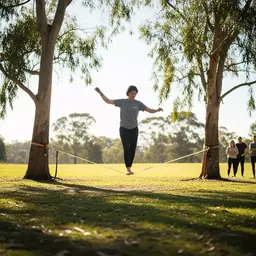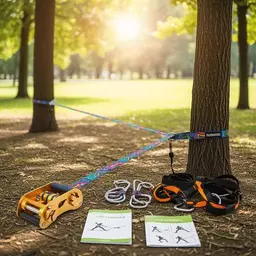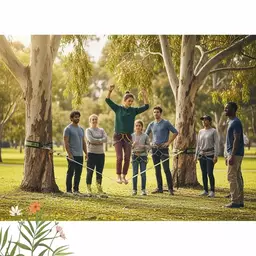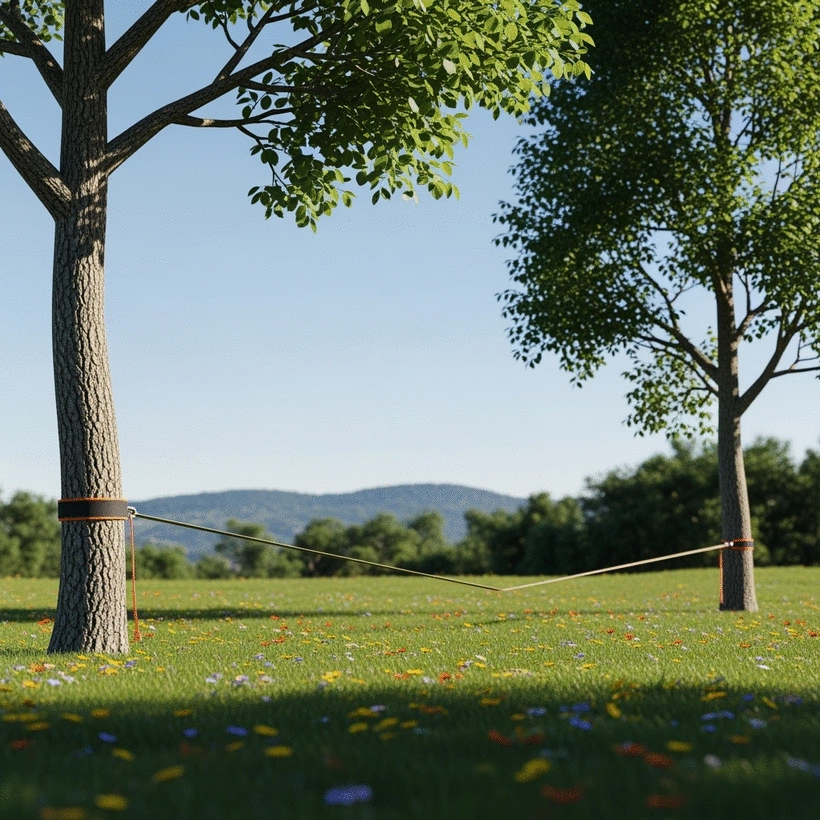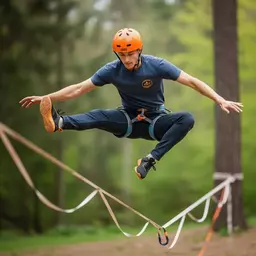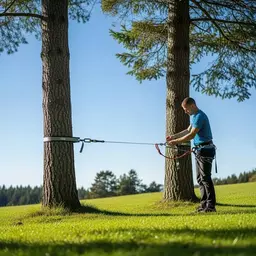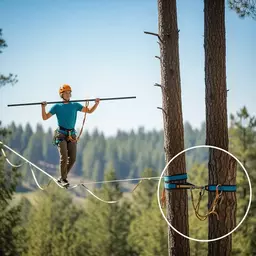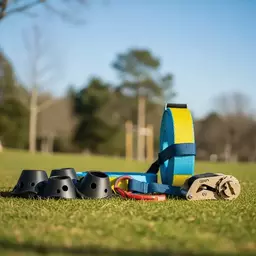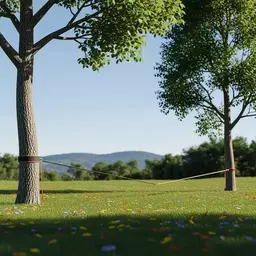Slackline Tricks: Progressing Your Skills
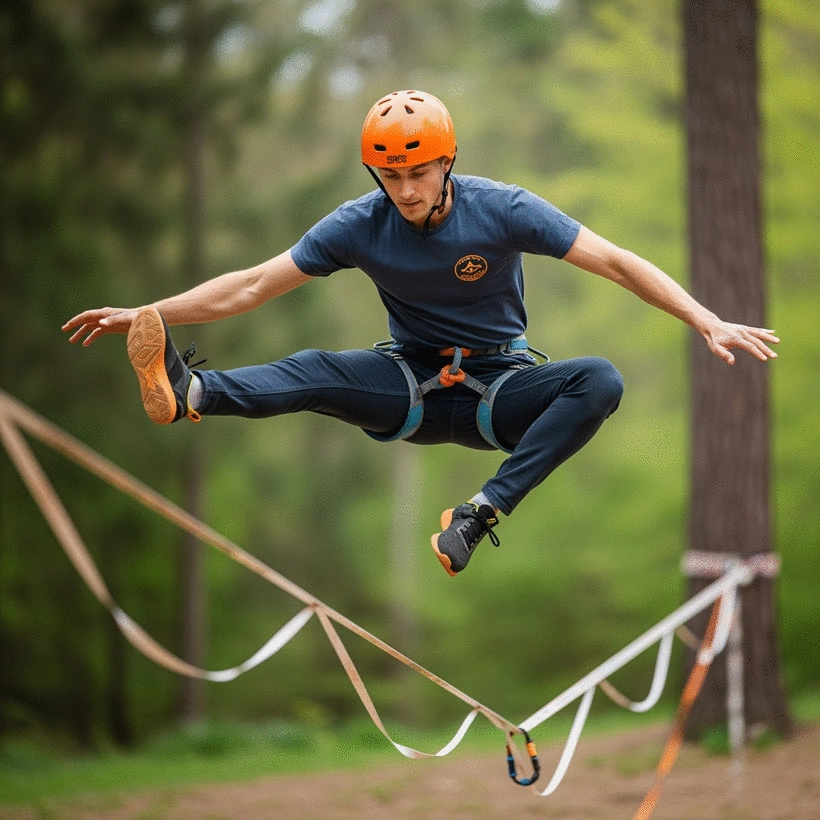
Slacklining isn't just about balance; it's a gateway to physical fitness, mental focus, and a strong community connection. Ready to learn how to master this thrilling activity? Here are the key takeaways that will elevate your slacklining journey!
What You Will Learn
- Slacklining significantly improves balance, coordination, and core strength, enhancing overall physical fitness.
- Mastering basic slackline skills lays the foundation for more advanced techniques and tricks.
- Regular practice fosters mental focus and concentration, valuable in both slacklining and daily life.
- Joining local slackline communities provides social connections and support, enriching your slacklining experience.
- Choosing the right slackline equipment suited for your skill level is essential for safety and progress.
- Understanding proper mounting and dismounting techniques ensures a secure and enjoyable slacklining experience.
Your Slackline Journey: From Beginner to Advanced
This visual outlines the progression of skills and engagement in slacklining, from understanding the basics to advanced techniques and community involvement.
- What slacklining is
- Why it matters
- Equipment selection
- Walking techniques
- Mounting techniques
- Dismounting techniques
- Intermediate moves
- Advanced techniques
- Regular practice
- Community engagement
Understanding Slackline Basics: The Foundation for Progression
Have you ever wondered what slacklining is and why it's such an exciting sport? Slacklining is essentially walking, balancing, or performing tricks on a suspended length of flat webbing, typically anchored between two points. It's a fantastic way to improve your balance, focus, and even your overall fitness! At Slackline Shop Australia, we've seen firsthand how this exhilarating activity can build a vibrant community of enthusiasts, from beginners to advanced athletes. For a deeper dive into the world of slacklining, check out our guide on choosing the best slackline brands.
But slacklining is more than just a fun outdoor activity; it matters because it connects us with nature, challenges our physical capabilities, and fosters a sense of achievement with every step we take on that line. Whether you’re looking to impress your friends or simply enjoy the thrill of balancing, understanding the basics lays the groundwork for your progression. So, let’s get started!
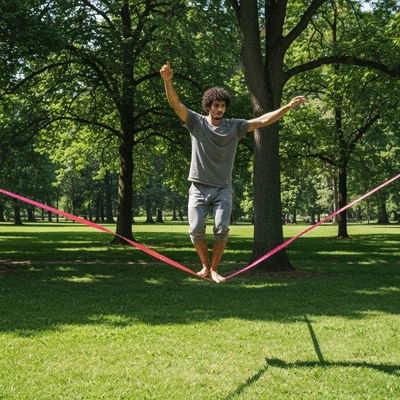
What is Slacklining and Why It Matters
- Slacklining promotes physical fitness and coordination.
- It enhances mental focus and concentration.
- Participating in slacklining builds a sense of community and camaraderie.
- It's a unique way to enjoy the great outdoors and connect with nature.
These benefits showcase why mastering the fundamentals is essential for anyone looking to dive into slacklining. At Slackline Shop Australia, we encourage everyone to give slacklining a try. Imagine yourself walking across a line, feeling the sun on your face and the thrill of mastering your balance—it’s a feeling that keeps you coming back for more!
Key Benefits of Mastering Basic Slackline Skills
- Improved Balance: Regular practice enhances your balance, which translates to better performance in various sports.
- Increased Core Strength: Slacklining engages your core muscles, helping you develop strength and stability.
- Heightened Focus: It teaches you to concentrate and be present in the moment, which is a valuable skill in everyday life.
- Social Connections: Joining local slackline groups can lead to friendships with fellow enthusiasts.
As you begin your slacklining journey, these fundamental skills will not only make you a better slackliner but also enrich your overall experience. So, are you ready to step on the line and discover the joy of slacklining? Let's dive deeper into the skills you'll need!
Step-by-Step Guide to Basic Slackline Skills
Getting Started: Equipment Selection for Beginners
To embark on your slacklining adventure, it's crucial to select the right equipment tailored to your skill level. This ensures a safer and more enjoyable experience as you learn the ropes, or in this case, the slackline!
Choosing the Right Slackline for Your Skill Level
- Beginners should start with a 1-inch wide slackline with a low stretch to help build confidence.
- Look for a slackline kit that includes all necessary components, such as anchors and a ratchet.
- Consider a line with a grippy surface to enhance traction while you learn to balance.
As someone who has spent years slacklining, I can’t stress enough how important it is to have the right gear! With the right slackline, you'll feel more secure, which allows you to focus on mastering those essential skills rather than worrying about the equipment. For more detailed advice, read our comprehensive guide on how to care for your slackline.
Essential Slackline Setup for Success
- Select a flat, soft surface like grass or sand for your setup.
- Ensure the slackline is anchored securely to sturdy trees or poles, at a height that is comfortable for you.
- Check that there are no sharp objects or hazards around your slackline area.
With the right setup, you’ll create an environment that encourages learning and progress. Remember, safety is paramount, so take your time to ensure everything is properly set up before stepping onto the line!
Mastering the Fundamentals: Basic Walking Techniques
Now that you’re equipped with the right gear and setup, it's time to focus on the skills that will help you thrive on the slackline! Walking is the most fundamental skill, and mastering it sets the stage for all your future tricks.
Balance and Posture Tips to Improve Stability
- Keep your arms out: This helps with balance as you walk.
- Keep your head up and look straight ahead, rather than down at your feet.
- Engage your core to maintain stability.
These simple posture tips can greatly enhance your walking experience on the slackline! Remember, it’s all about finding your center of gravity and maintaining it as you move.
Foot Placement and Common Mistakes to Avoid When Starting Out
- Place one foot directly in front of the other, heel to toe.
- Avoid looking down at the slackline, as this can throw off your balance.
- Don’t rush—take your time and focus on each step.
Avoiding these common mistakes can significantly help you build confidence as you traverse the line. Remember, practice makes perfect! Each attempt is a step closer to mastering the balance that slacklining requires.
Introduction to Mounting and Dismounting Techniques
As you build confidence, understanding how to properly mount and dismount is essential for a seamless experience on the slackline. Let’s explore effective techniques to make these transitions smoother.
Effective Mounting Techniques for Beginners
- Start by standing on one side of the line, placing one foot on it while balancing on the other.
- Slowly shift your weight to the foot on the line, keeping your arms out for balance.
- Once stable, bring your other foot onto the line.
These mounting steps will help ensure you start on the right foot—literally! It's a gratifying moment when you realize you can stand and balance on the line.
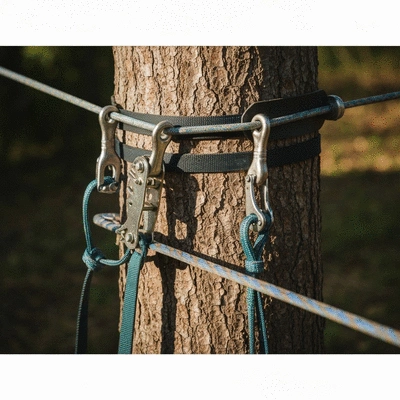
Safe Dismounting Techniques to Ensure a Smooth Landing
- To dismount, step off the line in a controlled manner, moving one foot at a time.
- Avoid jumping off, as this can lead to injuries.
- Always look for a safe landing area as you dismount.
Practicing these techniques will help you feel more secure as you transition off the line. Dismounting safely is just as important as mounting, so take care and practice regularly!
We Want to Hear From You!
What has been your biggest challenge while slacklining? Share your thoughts below:
Frequently Asked Questions About Slacklining
What are the main benefits of slacklining?
Slacklining significantly improves balance, coordination, and core strength. It also enhances mental focus, fosters social connections, and provides a unique way to enjoy the outdoors.
What equipment do I need to start slacklining?
Beginners should start with a 1-inch wide slackline with low stretch, typically as part of a kit that includes anchors and a ratchet. A slackline with a grippy surface is also recommended for better traction.
How can I improve my balance on a slackline?
Key tips include keeping your arms out for balance, looking straight ahead (not at your feet), and engaging your core. Regular practice and patience are crucial.
What are common mistakes beginners make in slacklining?
Common mistakes include looking down at the slackline, rushing steps, and not placing feet heel-to-toe. Avoiding these can significantly boost confidence and progress.
Is slacklining safe for beginners?
Yes, when proper setup and techniques are followed. Always set up on a soft surface like grass, ensure secure anchoring, and practice safe mounting and dismounting to prevent injuries.
Recap of Your Slackline Journey: From Basics to Advanced
As you progress through your slacklining adventure, it's essential to take a moment to reflect on all that you've learned! Whether you're just starting or pushing the boundaries of your skills, revisiting the key concepts can help reinforce your knowledge and fuel your passion. Here’s a quick recap of what we've covered:
- Understanding Slackline Basics: Knowing what slacklining is and its importance lays the groundwork for your journey.
- Mastering Basic Skills: Building your foundational techniques is crucial before moving on to more complex maneuvers.
- Progressing to Intermediate Moves: Learning static and dynamic techniques opens up a whole new world of possibilities!
- Advanced Techniques: Embracing challenges like jumps and flips takes commitment and courage, but the rewards are exhilarating.
- Community Engagement: Connecting with fellow slackliners enhances your experience and provides invaluable support.
By keeping these key takeaways in mind, you're setting yourself up for a successful and fulfilling slacklining journey. Remember, every step you take, no matter how small, brings you closer to mastering this exciting sport!
Next Steps: Embrace Your Slackline Adventure
Encouragement to Practice Regularly and Challenge Yourself with New Tricks
The journey of slacklining is all about growth and exploration! Don't hesitate to set new challenges for yourself. Whether it’s trying to walk a longer distance on the line or attempting your first jump, regular practice is key. Here are some motivational tips to keep you going:
- Schedule practice sessions into your week—consistency is vital!
- Set achievable goals, like mastering a new trick each month.
- Celebrate your progress, no matter how small, to stay motivated.
- Join a local slacklining group for support and shared experiences.
Remember, challenging yourself is part of the fun. Embrace each opportunity to push your limits—who knows what incredible skills you’ll develop next!
Resources for Continued Learning, Slackline Videos, and Community Support
At Slackline Shop Australia, we are passionate about providing you with the resources you need to thrive in your slacklining journey. Here are some fantastic ways to continue your learning:
- Online Tutorials: Check out our expert tutorials that cover everything from basics to advanced techniques.
- Video Content: Watch our curated selection of slacklining videos showcasing various tricks and skills.
- Community Forums: Join the Slackline Shop Australia community to ask questions, share experiences, and learn from others.
- Workshops and Competitions: Participate in local events to meet fellow slackliners and gain hands-on experience.
With these resources at your fingertips, you’ll never run out of ways to improve and enjoy your slacklining adventures. So, get out there, keep practicing, and remember: every line you walk is a step towards mastering your balance and technique! Discover more about the different types of slacklines available and their uses in our article on what exactly is a slackline.
Recap of Key Points
Here is a quick recap of the important points discussed in the article:
- Understanding Slackline Basics: Knowing what slacklining is and its importance lays the groundwork for your journey.
- Mastering Basic Skills: Building your foundational techniques is crucial before moving on to more complex maneuvers.
- Progressing to Intermediate Moves: Learning static and dynamic techniques opens up a whole new world of possibilities!
- Advanced Techniques: Embracing challenges like jumps and flips takes commitment and courage, but the rewards are exhilarating.
- Community Engagement: Connecting with fellow slackliners enhances your experience and provides invaluable support.
